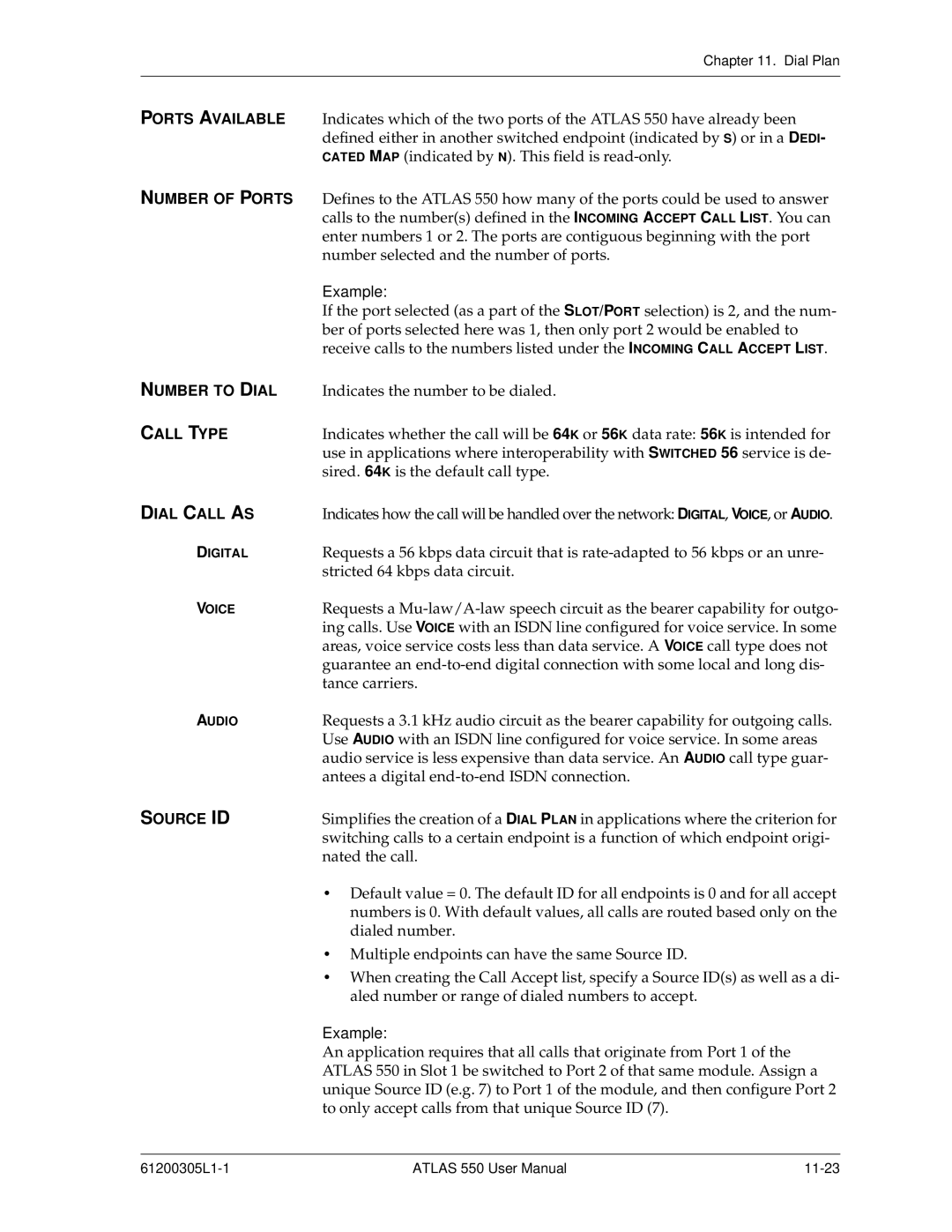| Chapter 11. Dial Plan |
|
|
PORTS AVAILABLE | Indicates which of the two ports of the ATLAS 550 have already been |
| defined either in another switched endpoint (indicated by S) or in a DEDI- |
| CATED MAP (indicated by N). This field is |
NUMBER OF PORTS | Defines to the ATLAS 550 how many of the ports could be used to answer |
| calls to the number(s) defined in the INCOMING ACCEPT CALL LIST. You can |
| enter numbers 1 or 2. The ports are contiguous beginning with the port |
| number selected and the number of ports. |
| Example: |
| If the port selected (as a part of the SLOT/PORT selection) is 2, and the num- |
| ber of ports selected here was 1, then only port 2 would be enabled to |
| receive calls to the numbers listed under the INCOMING CALL ACCEPT LIST. |
NUMBER TO DIAL | Indicates the number to be dialed. |
CALL TYPE | Indicates whether the call will be 64K or 56K data rate: 56K is intended for |
| use in applications where interoperability with SWITCHED 56 service is de- |
| sired. 64K is the default call type. |
DIAL CALL AS | Indicates how the call will be handled over the network: DIGITAL, VOICE, or AUDIO. |
DIGITAL | Requests a 56 kbps data circuit that is |
| stricted 64 kbps data circuit. |
VOICE | Requests a |
| ing calls. Use VOICE with an ISDN line configured for voice service. In some |
| areas, voice service costs less than data service. A VOICE call type does not |
| guarantee an |
| tance carriers. |
AUDIO | Requests a 3.1 kHz audio circuit as the bearer capability for outgoing calls. |
| Use AUDIO with an ISDN line configured for voice service. In some areas |
| audio service is less expensive than data service. An AUDIO call type guar- |
| antees a digital |
SOURCE ID | Simplifies the creation of a DIAL PLAN in applications where the criterion for |
| switching calls to a certain endpoint is a function of which endpoint origi- |
| nated the call. |
| • Default value = 0. The default ID for all endpoints is 0 and for all accept |
| numbers is 0. With default values, all calls are routed based only on the |
| dialed number. |
| • Multiple endpoints can have the same Source ID. |
| • When creating the Call Accept list, specify a Source ID(s) as well as a di- |
| aled number or range of dialed numbers to accept. |
| Example: |
| An application requires that all calls that originate from Port 1 of the |
| ATLAS 550 in Slot 1 be switched to Port 2 of that same module. Assign a |
| unique Source ID (e.g. 7) to Port 1 of the module, and then configure Port 2 |
| to only accept calls from that unique Source ID (7). |
ATLAS 550 User Manual |
